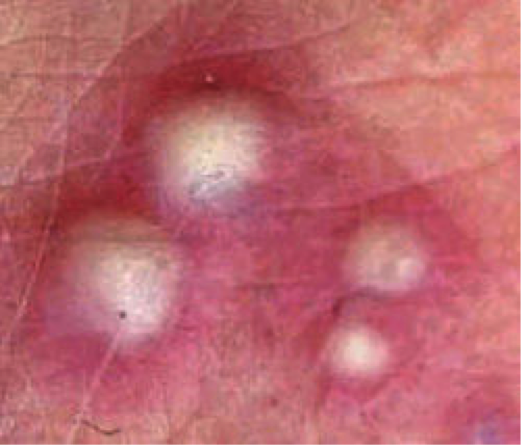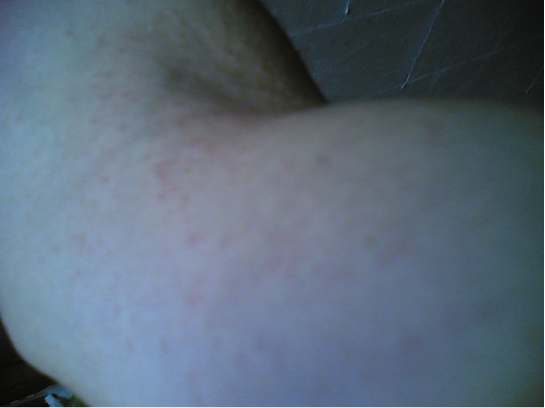WARNING: This post contains graphic content.
Skin lesions pictures
Many skin lesions are common and harmful, while others like skin cancer moles, are very dangerous and need to be diagnosed as soon as possible.
See below a selection of skin lesion pictures that will help you identify skin lesions on your skin. Please note that these skin lesion pictures should not be used as a means of self-diagnosis.
Rashes
They appear in the form of small red dots and are basically an allergic reaction. They might sting or itch.
Pustules

Small spots filled with pus, and therefore appear as white spots. They may itch and are hard to get rid of. Pustules are typically harmless but can leave scars if treated badly.
Acne
Acne is a very common and distinct form of pustules. It usually appears as small red spots, often filled with pus. You should treat acne with care to avoid leaving scars or other damages to the skin.
Blisters

Blisters appear as sunburns, steam burns, fire burns or insect bites. They are small skin lesions that will irritate but are harmless (unless they cover a large area). These skin lesions disappear by themselves but need good care.
Hives

Hives are the most common form of wheals and therefore appear in groups/patches of spots. They can be itchy or even sting but will disappear by themselves.
Melanoma (Skin cancer)

Melanoma appears as unnatural growth, mostly in moles. The most common characteristics of melanoma are abnormal colors (green, blue), uneven borders, asymmetry in form, and more. If you feel concerned about a mole, you are advised to visit your doctor.
Types of skin moles and how to know if they’re safe
Comparing images of skin lesions
When looking at photos of melanomas and comparing them to your own skin lesions you will instantly notice that skin lesions such as those mentioned above are often red in color (due to the infection and inflammation), are symmetrical in shape, are part of a pattern of skin irritation or they are easily explained. Melanomas will be individual moles, multi-colored or dark black, asymmetrical, with ragged borders and may be raised, itchy or bleeding.
Always make sure you go to a doctor if you are at all concerned.
What causes a skin lesion?
Most common skin lesions are caused by an infection on the skin which has led to the skin becoming irritated.
These types of lesions can be transmitted as part of a virus or infection, while others are caused by allergic reactions or you can even be born with them.
You may need antibiotics to help infections to heal or topical creams such as steroids may calm itchy skin – but in general, most lesions of these types will disappear on their own or with doctors treatment.
Read more on: What causes skin lesions?
Skin lesions treatment
Treatment of skin lesions can vary based on the form, body and other characteristics of each lesion. A doctor can look at each case to determine the right treatment. The treatment may include medication, surgery or home care in the case of harmless skin lesions that only need to heal without any drastic interference.